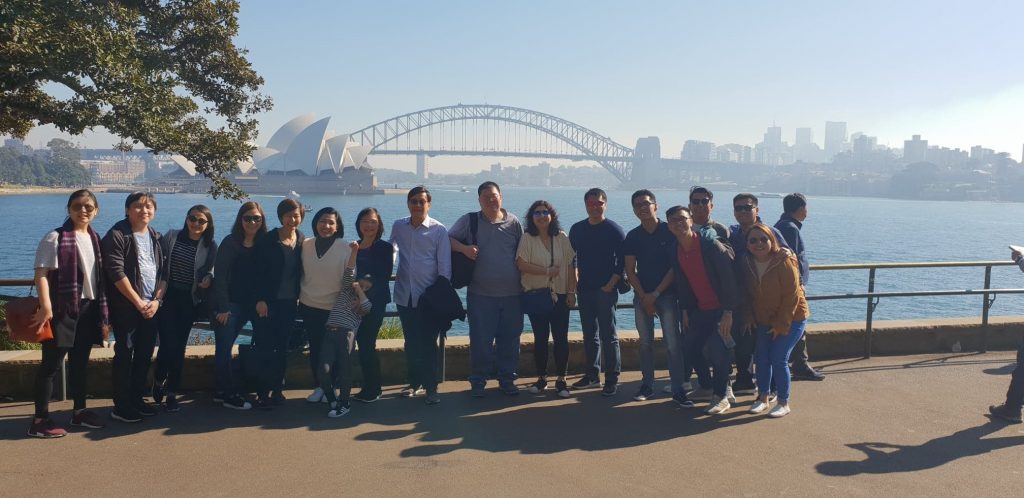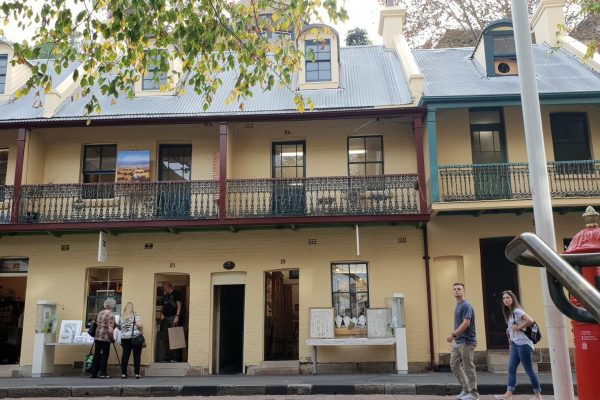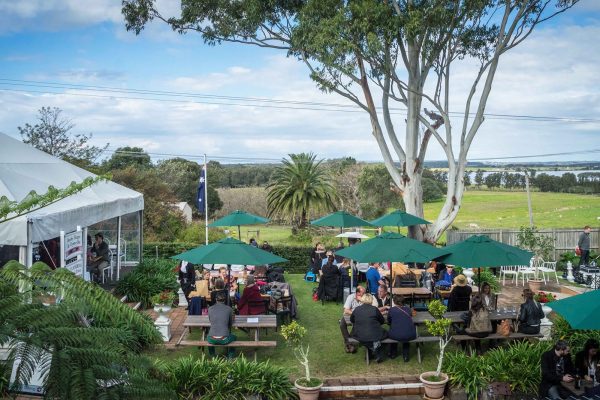These are some of the famous landmarks included in our Icons of Sydney Tour. This tour is becoming increasingly popular with overseas tourists.
Sydney Harbour Bridge
The Sydney Harbour Bridge is a heritage-listed steel through arch bridge across Sydney Harbour that carries rail, vehicular, bicycle, and pedestrian traffic between the Sydney central business district and the North Shore
Address: Sydney Harbour Bridge, Sydney NSW
Construction started: 28 July 1923
Opened: 19 March 1932
Height: 134 m
Toll: Time of day tolling (southbound only)
Did you know: It took 8 years 5 months 22 days to build the Sydney Harbour Bridge
In 1914, John Bradfield was appointed the chief engineer of the construction of what would be the Harbour Bridge.
79% of the steel used to make the Bridge came from England, with the rest being sourced from Newcastle, NSW.
The bridge is held together by six million rivets.
The 89 metre pylons on both ends of the Bridge were designed by Thomas Tait.
The stone used to build the pylons was acquired from Moruya, NSW.
During WW2, the pylons held anti-aircraft guns which were removed following the war.
On the city side of the harbour bridge, there once stood houses and a pub, the original Harbour View Hotel, where the pylons now stand. On the North Sydney side of the bridge, there was a tram terminus for northern Sydney tram services, which was also demolished prior to the bridge’s construction.
469 buildings in Milsons Point were demolished in the 1920s to make way for the bridge to be built, with little to no compensation to owners being paid.
As safety standards in the 1920s-30s were virtually non-existent, 16 workers lost their lives in the building of the Bridge.
The final cost of the bridge was 6.5mn in Australian pounds at the time of construction. The amount was not fully paid until 1988.
The Harbour Bridge was declared open by Premier Jack Lang in 1932. However, Francis De Groot, leader of the fascist New Guard resented Lang’s policies, and showed his disdain by coming to the opening on horse and cutting the ribbon himself.
The Bridge was known colloquially as the “Iron Lung” during the 1930s as it was the great depression and many workers on the site began to develop respiratory illnesses as a result of the unsafe working conditions.
The Bridge originally featured tram lines which were converted to roadways in the 1960s once the tram network closed.
Mrs Macquarie’s Chair
Mrs Macquarie’s Chair, otherwise known as Lady Macquarie’s Chair, provides one of the best vantage points in Sydney. The historic chair was carved out of a rock ledge for Governor Lachlan Macquarie’s wife by convicts in 1810. Elizabeth, as she was known to visit the area and sit enjoying the panoramic views of the harbour.
Mrs Macquarie’s Point, directly east of the Opera House on the eastern edge of the Royal Botanic Gardens, provides excellent views west across the harbour to the Bridge, the city and North Sydney. Looking north and east you can see Kirribilli House, Pinchgut Island (Fort Denison), the Naval dockyards at Wooloomooloo and Sydney’s east in the distance. The views from Mrs Macquarie’s Chair are still enjoyed today, over 200 years later, by hundreds of Sydney siders and tourists each day. The chair is also a prime location for the viewing of New Years Eve celebrations.
On the chair is an inscription referring to Mrs Macquarie’s Road, the original road which stretched from the current location of the Museum of Sydney to Mrs Macquarie’s Point. The original road went through the Botanic Gardens, and only a bridge in the park remains of it.
The bridge, the Macquarie Culvert, was built in 1813. It is believed to be Australia’s oldest standing bridge. It was restored in 2002 and a plaque at the bridge commemorates its construction.
Sydney Opera House
Situated on Bennelong Point in Sydney Harbor and close to the Sydney Harbour Bridge is Australia’s premiere performing arts facility called the Sydney Opera House. It is just a walking distance from Sydney central business district and the Royal Botanic Gardens. It is strategically perched between Sydney and Farm Coves. Below are a few interesting facts about this events venue.
10 interesting facts about the Sydney Opera House
- The land on which the Sydney Opera House sits was first developed as Fort Macquarie during the colonial period. Fort Macquarie was a castellated fort built in 1798 that lasted until 1901, and a tram depot was built in its place. The tram depot stood on the site before being demolished in 1958, and nothing of the former sites remain. Construction began on the Opera House and eventually it opened on 20 October 1973.
- In 1957, Jørn Utzon, was announced as the winner of a competition that was geared towards coming up with the best design of the opera house.
- The Opera house had originally been projected to cost $7million, but by the time it was finished, it had cost a whopping $120 million.
- The Opera House was constructed by about 10,000 workers and was opened by Queen Elizabeth II on 20th October, 1973.
- The Topaz glass that is used on the Opera was custom-made specifically for the Opera House by Boussois-Souchon-Neuvesel in France.
- The sails-like structures that give the opera house a unique design sits on a pillar that is believed to be the biggest free-standing column in the world.
- The building of the house measures 187 meters long and 115 meters wide (this is bigger than the standard football pitch). It sits on 5.798 hectares of land and 8 boing 747 can park inside the facility wing to wing.
- The Grand Organ in the Opera house was built for a period of 10 years. It is the largest mechanical music instrument in the world with 10,154 pipes.
- Within the facility are 7 performance venues that include; the Concert Hall, the Opera Theatre, Playhouse, Drama Theatre, The Studio, the Forecourt and the Utzon Room.
- The Sydney Opera House is the most distinctive landmark in Sydney along with the Bridge.
It is home to Opera Australia, The Australian Ballet, the Sydney Theatre Company and the Sydney Symphony Orchestra.
Fort Macquarie (1798-1901)
British style defensive fort that stood for 103 years, however it was never actually made to defend the harbour as there were no attacks.
While nothing of the site remains today, (its canons still exist though, and are located in Newcastle) there are other remnants of other forts around Sydney dating to the colonial period and later. One example is the canons at Dawes Point, near the southern pylon of the bridge, and the fortifications near Bradleys Head at Mosman.
Aerial view of the Tram Depot that occupied the site of the future Opera House, from 1902-1958.
The tram depot dated to a period when Sydney was still a working harbour, and far from the renowned tourist location it is today. Note the cargo ships at port nearby, located there now are five-star restaurants and luxury hotels. All the port and buildings on the eastern side of Circular Quay were demolished by the 1980s and cargo ships ceased operating out of Sydney Harbour.
Contact us today to book your Icons of Sydney tour or transfer.












